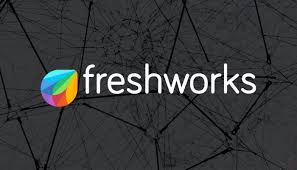
Understanding the many forms of automated testing available when deploying automated tests in your QA department is critical. It will provide you with a clear understanding of how extensive a test automation program you can integrate into your existing QA processes.
Furthermore, understanding the various tests allows you to make informed selections about which testing methods would produce the best results for your organizational structure.
Automated Testing Services Types
There are numerous types of automated testing services. Here’s a comprehensive look at the most frequent types of automated testing types:-
1. Functional Evaluation
Software is evaluated during a functional test against predetermined functional requirements and specifications. It focuses on the functionality of the program and primarily uses black box testing.
Black box testing, commonly referred to as behavioral testing, involves evaluating an element’s functioning without learning more about how it operates internally. This indicates that the tester does not know the construction or layout of the thing being tested.
Functional testing is largely concerned with evaluating a system’s core features, along with its availability to users and other factors. Examples of functional testing include user acceptability testing, smoke testing, integration testing, and unit testing.
2. Unit Testing
Running tests on isolated, discrete parts or functionalities to ensure they are operating as intended is known as unit testing. It is frequently the first kind of automated testing performed on an application because it is typically done during the development stage of the software.
Integration testing is never conducted before unit testing, which is typically carried out by the developer.
To reduce the cost of bug fixes, unit tests are very helpful in identifying flaws earlier in the development process. Unit testing is a useful tool for assisting developers in comprehending the operation of every unit in the program and facilitating code reuse.
3. Integration Evaluation
All the individual components of the application are tested as a whole during integration testing. It focuses on determining if the system as a whole meets the functional requirements that have been established for it.
Examining how the various modules interact when combined is how integration testing operates. Following unit testing, integration testing helps ensure smooth communication between the various parts to facilitate a well-functioning system as a whole.
Integration testing can be done in several ways, including the Big Bang, Top-Down, Bottom-Up, and Sandwich techniques.
4. Smoke Testing
Smoke testing consists of a limited number of tests intended to assess the reliability and feasibility of the distributed build of the program.
Smoke testing concentrates on determining whether or not the program’s key components are functional. It is used to determine whether the software should be abandoned due to a dearth of functionality or moved on to the subsequent testing phases.
Once the generated software features have been incorporated into the software build, smoke testing is performed. The application will typically be sent to the development staff for revision if testing at this level fails. Smoke testing is often done by QA engineers.
5. Non-functional Testing
An application’s performance, reliability, usability, and other non-functional components are all tested as part of this testing process.
It differs from functional testing as it emphasizes effectiveness rather than the functionality of the product. Functional testing is typically followed by non-functional testing since it makes sense to first verify that the product accomplishes its intended purpose before examining how well it does so.
Performance, reliability, security, load, scalability, compatibility, and other non-functional testing techniques are some of the most popular ones.
6. Performance Testing
The process of testing the speed, stability, as well as the responsiveness of software under load is known as performance testing.
Performance testing’s primary objective is to find any potential performance barriers and get them removed so that the software may be optimized to offer the best outcomes to the end user.
Performance testing is a crucial component in guaranteeing a software’s success on the market since it identifies potential problems customers may experience, such as slow software functioning under a heavy workload.
To make sure they can operate dependably even under the most demanding conditions, performance testing should also be done on key software and medical programs.
7. Regression Testing
Regression testing is occasionally referred to as the type of testing that falls within the maintenance testing umbrella.
Regression testing entails rerunning non-functional and functional checks to see whether the software is functioning as it did before any type of code or program change. It is argued that the software has regressed if the performance isn’t the same.
The main goal of regression testing is to make sure that no code modifications have had a negative impact on the functionality that is already in place.
Conclusion
There are various types of automated testing services that you can choose from as per your requirements. But finding the perfect testing type for your software business is not easy.
QASource is one of the leading automation testing companies that offer high-quality software testing services for your software business.
Visit QASource now to implement cutting-edge automation testing services for your software products.




